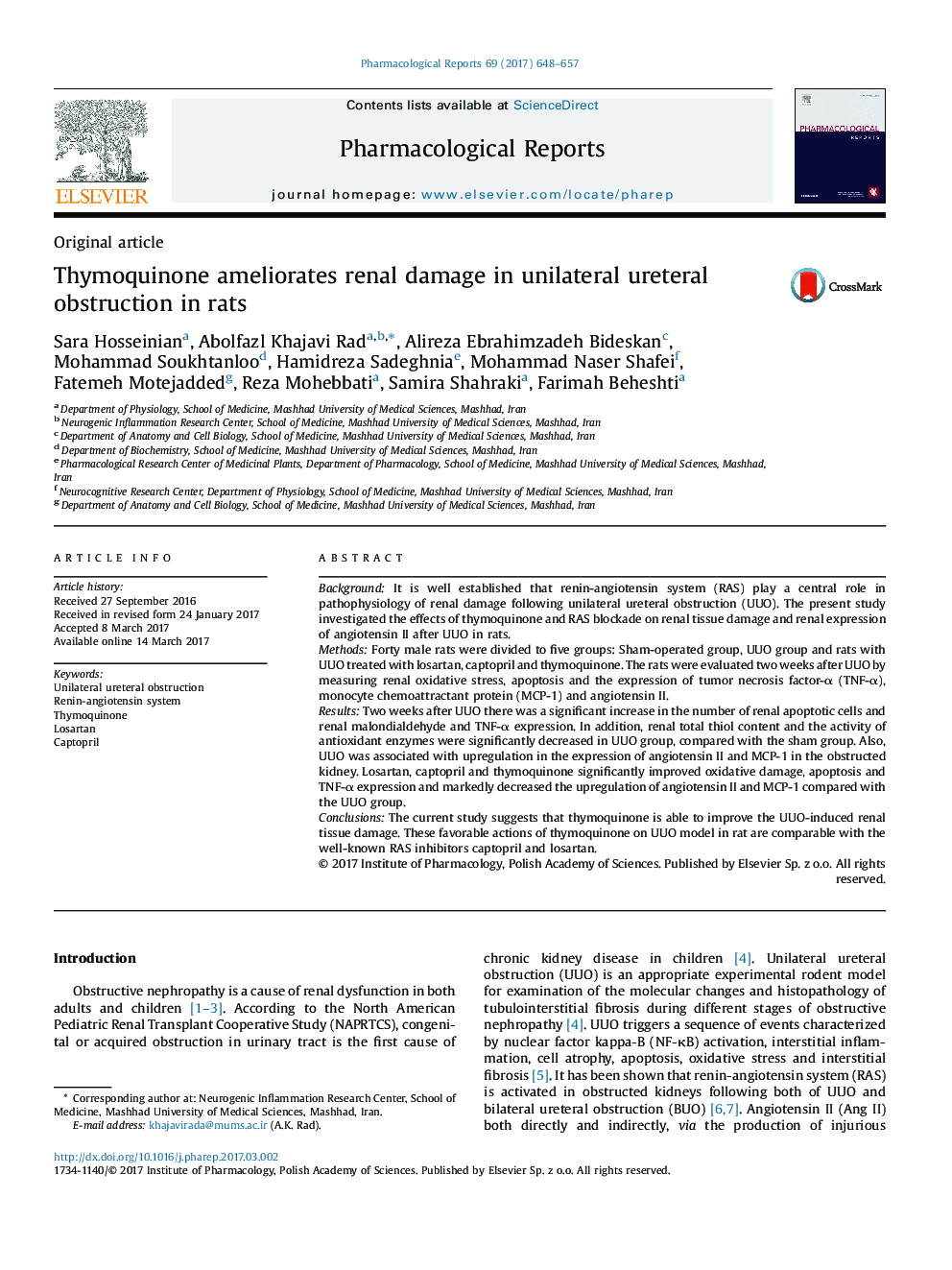| Article ID | Journal | Published Year | Pages | File Type |
|---|---|---|---|---|
| 5515031 | Pharmacological Reports | 2017 | 10 Pages |
BackgroundIt is well established that renin-angiotensin system (RAS) play a central role in pathophysiology of renal damage following unilateral ureteral obstruction (UUO). The present study investigated the effects of thymoquinone and RAS blockade on renal tissue damage and renal expression of angiotensin II after UUO in rats.MethodsForty male rats were divided to five groups: Sham-operated group, UUO group and rats with UUO treated with losartan, captopril and thymoquinone. The rats were evaluated two weeks after UUO by measuring renal oxidative stress, apoptosis and the expression of tumor necrosis factor-α (TNF-α), monocyte chemoattractant protein (MCP-1) and angiotensin II.ResultsTwo weeks after UUO there was a significant increase in the number of renal apoptotic cells and renal malondialdehyde and TNF-α expression. In addition, renal total thiol content and the activity of antioxidant enzymes were significantly decreased in UUO group, compared with the sham group. Also, UUO was associated with upregulation in the expression of angiotensin II and MCP-1 in the obstructed kidney. Losartan, captopril and thymoquinone significantly improved oxidative damage, apoptosis and TNF-α expression and markedly decreased the upregulation of angiotensin II and MCP-1 compared with the UUO group.ConclusionsThe current study suggests that thymoquinone is able to improve the UUO-induced renal tissue damage. These favorable actions of thymoquinone on UUO model in rat are comparable with the well-known RAS inhibitors captopril and losartan.
